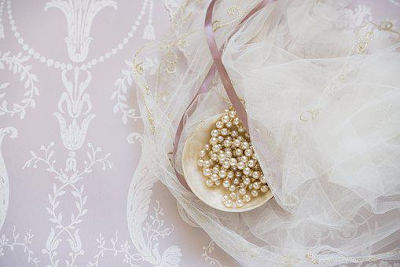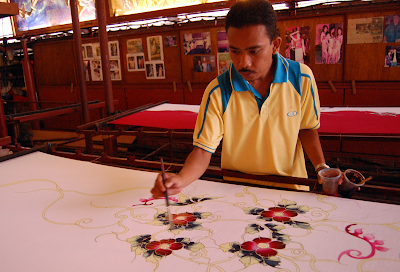Featured
- Get link
- X
- Other Apps
Beads
Beads are tiny, functional spheres that are often strung together to make necklaces.
They may be constructed of glass, precious or semi-precious stones like ivory, coral, turquoise, amber, or rock crystal, as well as metal, ceramics, and glass.
The frequent occurrence of beads at archaeological sites provides compelling evidence of human desire for personal ornamentation and embellishment.
The majority of the materials used to make the oldest beads, which date to the Paleolithic era, were seeds, nuts, grains, animal teeth, bones, and, most significantly, sea shells.
Beads were utilized in barter and ceremonial exchanges, much like sea cowries, and as a result, they are an invaluable source of information about early trading routes.
It is estimated that beads discovered in ancient Egyptian tombs date to about 4000 B.C.E.
Beads made of faience (glazed ceramic) first emerged in predynastic Egypt and were still produced until the Roman Empire.
Additionally, ornate beads with human and animal faces were manufactured by the Egyptians and Phoenicians.
The Sumerian and Indus valleys are home to what are likely the first gold beads, dating back to 3000 B.C.E.
Later gold beads have been discovered in Ashanteland (Ghana) and other regions of Africa.
Late Bronze Age (about 1100 BCE) Mycenaean beads with granulated surfaces and original floral forms, such lilies and lotuses, have been discovered in Crete.
American Indians used a lot of stone, shell, and glass beads, as well as glass beads starting in the fifteenth century C.E.
Beads are worn by various groups of people for magical as well as aesthetic reasons.
For instance, coral pearls are usually an essential component of a woman's trousseau in Middle Eastern and southern European nations because they are believed to promote conception.
To ward off illness and bad luck, turquoise and blue-colored beads are sewn onto domestic animals' collars, children's clothing, wedding gowns, and brides' and children's children's collars.
They are also hanging from automobile mirrors.
"Eye beads" strung together with cowries are frequently used in amulets believed to have the power to prevent impotence, the loss of breast milk, or the alienation of a husband's affection.
Due to a subtle resemblance of openings and curved lines, the latter are understood to symbolically represent both the eye and the female genitalia.
Since the Middle Ages, rosaries made of beads have been used to count prayers.
The name "bead" is derived from the Middle English word "bede," which meant pray.
However, since beads were transferred to many cultures with different symbolic systems, they quickly acquired new meanings, even if they had taken on well defined religious value in Europe.
Rosaries were among of the first strings of crystal and glass beads that crusaders shipped in large numbers from Venice, and they quickly appeared in clothing and decorations for rituals and belief systems that were quite distinct from their own.
They were often employed as trade counters.
Some bead varieties that were valuable due to their rarity were taken out of the commercial trade system and turned into ancestral property, only trading hands as bride-wealth or being used to support claims of royal and aristocratic position.
Beads were often traded by European merchants for American Indian or African products of far higher worth, such as gold or even slaves.
According to folklore, Dutch settlers paid the equivalent of $24 in beads to purchase the whole island of Manhattan.
A fundamental American myth, the tale is often narrated to illustrate how uncivilized and uneducated the Indians were.
However, as studies of several civilizations have shown, beads were really utilized in commerce for many years prior to the arrival of Europeans, and their worth was established by social agreement.
Beads serve as vital identifiers for many African people.
Everyday attire includes beaded clothing and caps, but ceremonial events call for them the most.
Small bead gems are made by young girls for their favorite boyfriends.
These gems may have a multitude of connotations depending on the contrast of their various hues and forms, and whites have referred to them as "love letters."
Beadwork has turned into a valuable source of revenue for certain South African Kwa-Zulu women who have shown extraordinary talent in producing beaded figurines or dolls clothed in ethnic costumes to sell to visitors in the Durban area.
Bead usage has persisted unbroken throughout history, both for personal adornment and for decorating a wide range of things.
They may be embroidered, sewn into fabrics, added to hats, belts, purses, and other home items like boxes and lampshades.
They can also be stitched or woven into textiles.
American Indians have historically decorated leather clothes, backpacks, and boots with brilliantly colored glass beads in distinctive geometric patterns.
From the fourteenth through the middle of the twentieth century, Venetians dominated the production and export of glass beads, but by the early 2000s, beads were produced all over the globe.
Since the 1960s, collectors of antiques and museum keepers have developed a particular interest in the cultures and traditions of third-world nations.
As a result, the general people has resumed using and producing beads on a big scale.
Fashionable products like purses, women's waistcoats, and belts with vibrant beadwork are produced in China and other countries in the Far East.
The city's association with glass beads helps it maintain a thriving second-hand and antique trade, as well as a strong interest in experimentation and creativity in the search for new versions of the traditional craft of making glass beads and their use in personal ornaments.
Venetian beads are still of exceptionally high quality, despite not being produced on the scale they once were.
In nearly every city, you may find stores with vibrant displays of beads, fine metal, or cotton and silk thread.
Stringing necklaces and bracelets in particular has become a popular kind of beadwork.
Beads are a highly adaptable aesthetic element that are often specially made to accent a specific dress or event due to their inexpensive cost relative to jewelry.
Find Jai on Twitter | LinkedIn | Instagram
See also:
Costume Jewelry; Jewelry; Necklaces and Pendants; Spangles.
References And Further Reading:
Carey, Margaret. “Across the Atlantic: Beaded Garments Transformed.” Journal of Museum Ethnography no. 14 (March 2002).
Dubin, Lois Sherr. The History of Beads from 30,000 B.C.E. to the Present. New York: Harry N. Abrams, 1987.
Eicher, Joanne B., and Barbara Sumberg. “World Fashion, Ethnic and National Dress.” In Dress and Ethnicity: Change across Space and Time. Edited by Joanne B. Eicher. Washington, D.C.: Berg, 1995.
Hughes-Brock, Helen. “The Mycenaean Greeks: Master Bead Makers. Major Results Since the Time of Horace Beck.” In Ornaments from the Past: Bead Studies after Beck: A Book on Glass and Semi-Precious Stone Beads in History and Archaeology for Archaeologists, Jewelers, Historians and Collectors. By Ian C. Glover, Helen Hughes-Brock, and Julian Henderson. London and Bangkok: Bead Study Trust, 2003.
Israel, Jonathan I. Dutch Primacy in World Trade, 1585–1740. New York: Oxford University Press, 1989.
Jones, Mark, ed. Fake? The Art of Deception. Berkeley: University of California Press, 1990.
Karklins, Karlis. Glass Beads. 2nd edition. Ottawa: National Historic Parks and Sites Branch, 1985.
Klump, D., and Corinne A. Kratz. “Aesthetics, Expertise, and Ethnicity: Okiek and Masai Perspectives on Personal Ornament.” In Being Maasai: Ethnicity and Identity in East Africa. Edited by Thomas Spear and Robert Waller. Athens: Ohio University Press, 1993.
Orchard, William C. Beads and Beadwork of the American Indians: A Study Based on Specimens in the Museum of the American Indian. New York: Museum of the American Indian, Heye Foundation, 1929.
—. “Transport and Trade Routes.” In The Cambridge Economic History of Europe, vol. 4. Cambridge, U.K.: Cambridge University Press, 1967.
Picard, John, ed. Beads from the West African Trade. 6 vols. Carmel, Calif.: Picard African Imports, 1986.
Sciama, Lidia D., and Joanne B. Eicher, eds. Beads and Bead Makers: Gender, Material Culture, and Meaning. Oxford: Berg, 1998.
Tomalin, Stefany. Beads! Make Your Own Unique Jewelry. New York: Sterling Publishing Company, 1988.
—. The Bead Jewelry Book. Chicago: Contemporary Books, 1998.
Tracey, James D., ed. The Rise of Merchant Empires: Long-Distance Trade in the Early Modern World, 1350–1750. New York: Cambridge University Press, 1990.
- Get link
- X
- Other Apps
















